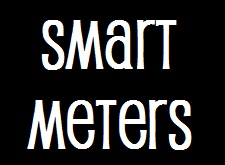Fo rget the Smart Meter Roll Out, in this corner of the energy industry we simply don’t expect it to happen on time, in budget, at all.
rget the Smart Meter Roll Out, in this corner of the energy industry we simply don’t expect it to happen on time, in budget, at all.
There is however a much more exciting prospect for business energy customers that is finally being implemented and which should be the foundation for a truly smarter, more efficient, and cheaper way for businesses to access the energy market.
It has been a very long time coming, 10, 15, 20 years or more, and has been the subject of plenty of hyperbole as to why it could not be done. Now it will be. And businesses can rejoice. (That is if they feel the urge to get excited about such things – they should)
As of April 2016, ahead of the (delayed) start of the Smart Meter Roll Out, all Profile Class 5 to 8 business electricity customers will be required to be traded and settled using half hourly data.
The science isn’t earth shattering but it could be ground breaking for a truly effective business energy market, with the accent on market.
The history
The electricity market is settled on a half hourly basis. This means that in every half hour the industry records and defines how much electricity is needed/was used.
Traditionally this has been done through actual readings (for less than 1% of the market) or through generic profiles (which estimate how much would be used in each half hour).
The industry has long felt it was cost prohibitive to deploy Half Hourly metering across all 26,000,000 meters in the UK.
But smart metering was supposed to herald a cheaper alternative to Half Hourly metering and high hopes were held for it.
However early in the piece it was decided that the Half Hourly settlement system would not be able to cope with the 26,000,000 clever meters and so the idea, and therefore the true benefit of smart metering was shelved.
Demand profiles
There are eight profiles in the energy market plus Half Hourly metering.
A profile is a trend of demand over a period.
Profiles 1 and 2 mimic the behaviour of domestic customers, the latter those with Economy 7 meters.
Profiles 3 and 4 likewise reflect the generic behaviour of businesses customers, the latter those with Economy 7 meters.
Profiles 5 to 8 are less common and more complex.
Half Hourly metering is just that, there is no generic profile, rather there is a series of recorded Half Hourly demand readings which taken together create a bespoke profile of how and when electricity is used through that meter.
It is this latter situation that the new directive is intended to mimic.
Settlement
Settlement is the behind the scenes work of the industry and meter reads. By establishing what was used and when, demand, supply and prices can be balanced, suppliers can be charged, and suppliers can pass on those charges to their customers.
However the vast majority of this has always been estimated, relying on the Profiles and as such was inherently inaccurate. Your business could for instance be a night club and you would be settled on the same profile as a day care centre even though all your usage came at night (when it is cheaper). In essence you missed out.
That missing out meant being settled and therefore billed for periods you did not use energy in amounts you did not use.
It also meant that your price, the price your supplier quoted you, was based not on your behaviour but on one of eight profiles guaranteed not to reflect reality.
Smart meters were supposed to be the solution, but smart meters are a great idea compromised by reality.
A smart meter is intended to read, store and communicate half hourly data from even the smallest consuming sites.
This allows a far more accurate reporting of the behaviour of each premise which can then be collated to provide a ‘true’ view of demand in the energy market.
But by only collecting this data and not using this data in settlement, the impact on accuracy was naturally limited.
Yes you would receive accurate readings and therefore (hopefully) accurate invoices but bizarrely, how and when this usage was deemed to have occurred and the unit price charged for the usage would still be based on the generic profile.
In other words by the time the smart meter reads made it into the industry they were rendered ineffective.
Smart
Clearly that is sub-optimal. Hence the excitement that smart meters originally promised: accurate consumption patterns, charges against actual behaviour and pricing relevant to your specific business needs. Perfect.
Yet as has been mentioned already, the industry ‘balked’ at the cost of implementing a system capable of managing this amount of data.
Cue the smart meter revolution being rendered mute before it was born.
The epiphany
But now, as of April 2016, the reality that should have been ours years ago will now come to fruition, that is at least it will for a small minority of business energy customers.
As of 2016, the smart meter installed in a business premise will be able to report its actual demand, by half hour, this can then be used to create a bespoke profile and therefore an accurate price beyond meter readings, not just the old way “you’ve used x” but “you’ve used x at this time and price, y at this time and price” and so on, removing the estimation and broad assumption and delivering a true reflection of cost and crucially an accurate set of data to deliver bespoke, and naturally cheaper, pricing.
Worth waiting for? Yes. Indeed. Job done? No, not at all, now for the rest of the business energy market please.
